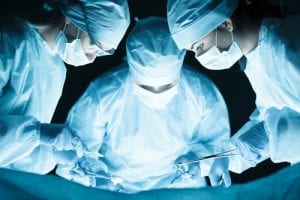First experiences with Cadaveric Dissection
The opening sentences of my personal statement are:
“Standing over the cadaver as the medical students prepared to dissect the jaw, a 15-year-old me was fascinated by the procedure. I was on a placement at St George’s hospital, attending an anatomy session. Not knowing what a cadaver was prior to entering the room, it only served to spark my interest in a career in Medicine; I was eager to find out more.”
This experience was a pivotal part of my journey into medical school.
The third sentence is slightly inaccurate. The consultant I shadowed told me we were going to observe an anatomy session. He asked whether I knew what a cadaver was; I had no clue. Nor did I know they were used for teaching anatomy. Nor much else about teaching at medical school for that matter. No sooner than he’d explained to me the definition, we were headed down to the labs.
I just remember being totally unfazed, nonchalant and clinical. I spoke to some medical students, who told me some of their peers had left the room, or even fainted or vomited in the presence of cadavers. What’s the big deal, I recall thinking. I felt quite chuffed with myself for staying in the room with my stomach contents where they belonged, but what a naïve, detached feeling that was. In retrospect, I hadn’t even begun to reflect on the greatly multidimensional dialogue of dissection.
Cadaveric Dissection at Medical School

Upon starting medical school, I still had the superficial, juvenile attitude towards teaching with cadavers I’d had 3 years ago. I wasn’t anxious about learning anatomy, but rather eager, thinking: Prosections will be a breeze, I saw dissections at 15.
The depth with which I thought about anatomy markedly changed after a lecture I had two weeks before entering the labs. This fortnight gave me plenty of time to prepare myself for the practical sessions, and I was prompted to spend time reflecting.
We received a brief history lesson, from the gruesome grave-robbing days of Burke and Hare through to the development of the Anatomy Act we abide by today. Through hearing about how anatomy was taught throughout history, I was reminded of the importance of consent and respect. On the way to the anatomy labs is a mortsafe, a heavy cage that was placed over graves to prevent robbery, a regular reminder of how significantly history can change in just 200 years.
In our first session, I entered the room rather uneasily. Maybe this time I’ll faint, I thought. Strangely, I felt reluctant to participate, despite the fortnight of reflection, which had given me assurance. But this was momentary, and I could enjoy and make the most of the session. The first body had a notable tattoo on his arm. Seeing him first reminded me that every cadaver is individual, although some might look quite similar. They’d all lived their own complex lives.
Reflecting on Cadaveric Dissection
An annual memorial service, which I look forward to attending, is held for those who have donated their bodies to the university. Here, family and friends of those who donated their bodies can honour and remember their loved ones. All of a person’s specimens are numbered and kept together at the service, and then buried or cremated, per their wishes. Meeting family and friends of those who donated their bodies will undoubtedly refresh in my mind the value of cadaveric material, and allow me to further reflect. This stressed to me the importance of respecting wishes of every human, whether deceased and donating their body for education or medical research, or whether a living patient coming to you for aid.
When you think about key areas of reflection in medical practice, the obvious would be breaking bad news, making errors, or perhaps working in palliative care. I doubt anatomy would be at the forefront of anyone’s mind. It certainly wasn’t in mine until 2 months ago. My first experience with cadavers wasn’t reflective, and I hadn’t considered the numerous implications and complexities of body donation to science. This latter experience and reflection has ultimately increased my appreciation for those who choose to contribute to my learning and the advancement of medicine in such a way.
Words: Toyin Jesuloba
